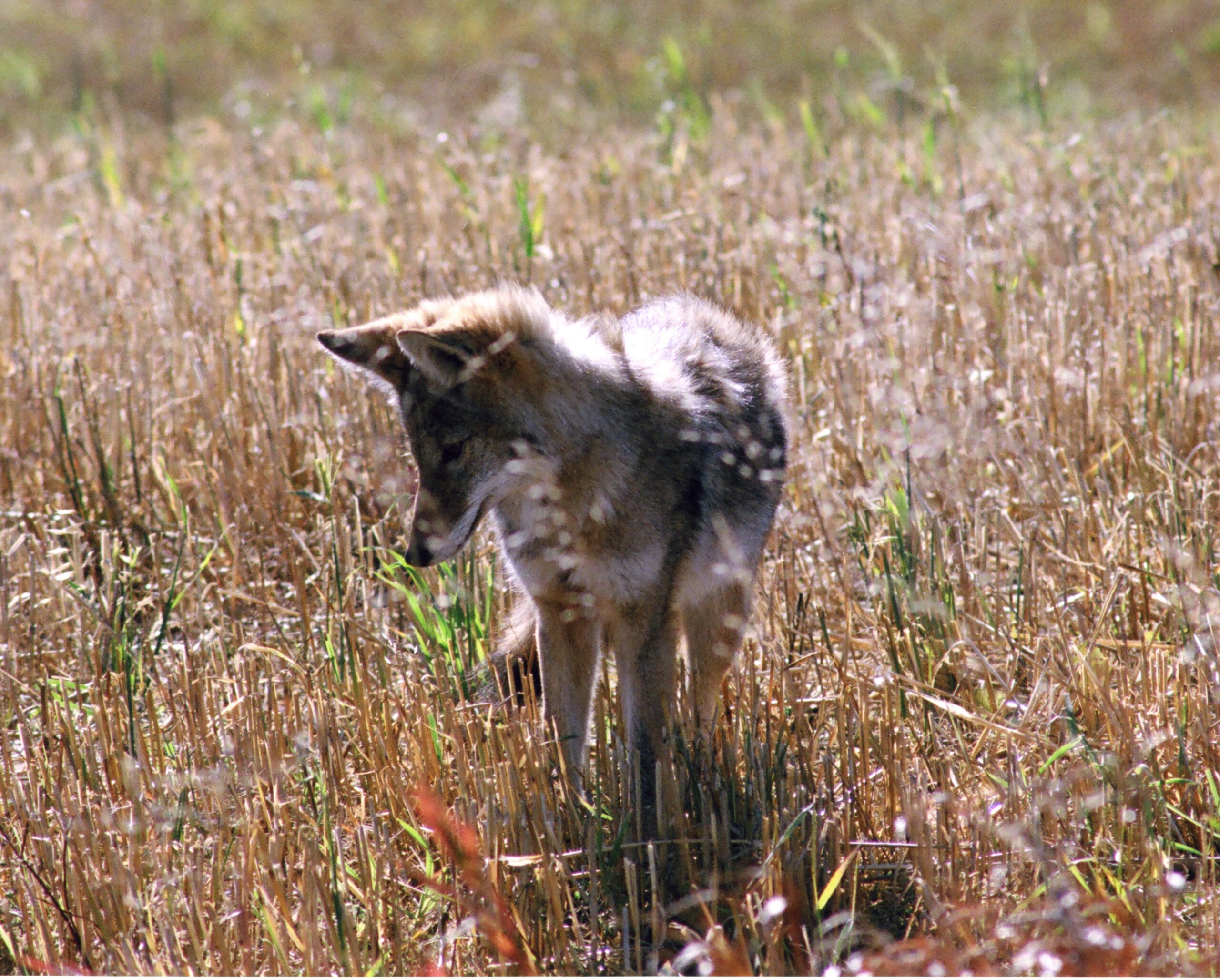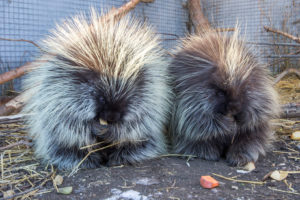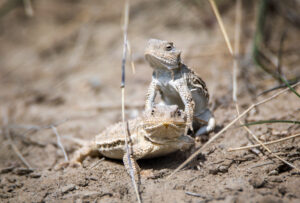by Katie Grant
The coyote is a species of canine native to North America. It is one of the seven members of the Canidae family that can be found in Canada; other members of the family are the wolf, grey fox, red fox, arctic fox, swift fox, and dog. In 1833, Thomas Say published a description of the species, giving it the Latin name Canis latrans, meaning barking dog. Since 1967, its official name in Canada, in both English and French, has been coyote, which is a Spanish alteration of the original Aztec name coyoti.1 The coyote is also often called prairie wolf or brush wolf.3
ABOUT COYOTES
Coyotes resemble a hybrid between a fox and a smaller collie or German shepherd.3 The male coyote is slimmer and smaller than the wolf, weighing between 9-23 kg, measuring 120-150 cm, including their 30-40 cm tail, and standing 58-66 cm tall at the shoulder. Females are typically smaller than the male. The long, soft fur of the coyote is ideal for keeping it warm in the winter; the neck has a lot more fur on it, which can make it appear too large for the body.1 Their canine teeth are very long and are capable of crushing bone material. Although they are very sharp, they are still not as sharp as your pet cat’s teeth.2
The coyote’s yelping and howling call, a series of high-pitched baying, is its most well-known characteristic. The coyote can also squeal, growl and bark. They are frequently silent throughout the day, but can be heard at any time between sunset and sunrise, but particularly around twilight and morning. If there are numerous coyotes nearby, the howling of one of them causes the others to join in, creating a chorus. When two coyotes howl simultaneously, it can sound like there are ten or more of them. The coyote has a complex vocal system used to communicate danger, locate pack members and defend their territory.5 This generally consists of two short barks followed with a long, wavering howl. They reply to one another, usually concluding in an assortment of loud yelps.1
The coyote can easily run at a speed of 40 km/hr, and is capable of reaching speeds of more than 60 km/hr. Its sense of hearing and smell are so keen that a sudden sound or odour can cause it to change its path mid-step.1 They are also capable of swimming quite well if necessary.1 Coyotes are highly intelligent animals and adapt their hunting techniques to the size of the prey and the available food sources. They are primarily carnivores, preying on rabbits and rodents, but also consume fruits and insects. They are a threat to domestic dogs and cats, as well as various livestock such as sheep, goats, poultry and calves.3
Coyotes mate for life and both work together in hunting, denning and raising their pups.3 It is also common for the aunts, uncles, and older siblings from previous litters to help with the newborns.4 Breeding can begin as early as the age of one, but is more common when they are 2-3 years old.4 Breeding starts in February with the litter being born 60-63 days later, usually consisting of 5-7 pups.3 In the wild, their lifespan is generally 10-11 years. Coyotes use the extremely strong scent of their urine paired with scat and soil scratching to communicate that they inhabit a specific area to any non-related coyotes. These techniques also provide vital information to their family members.4
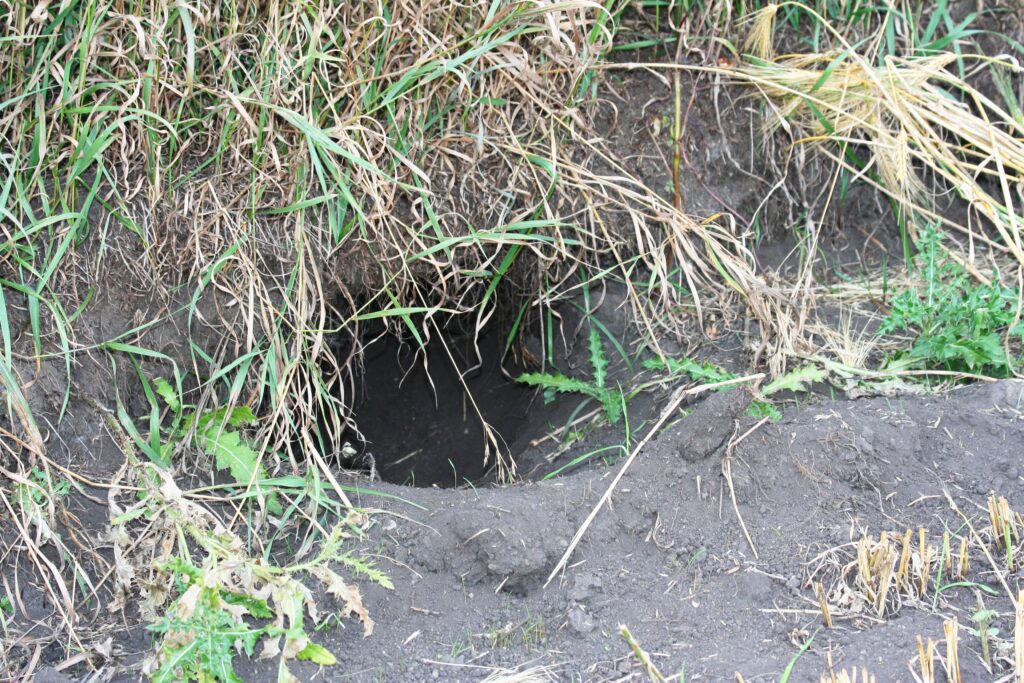
Coyote den
HABITAT
Despite widespread human persecution, the coyote is one of the only mammals whose range is expanding. During the past century, it has spread from the Midwest of the United States to the majority of North America. Their traditional habitat consists of the grass prairie in the three prairie provinces and the aspen parkland, which they still inhabit. They have also spread west into the mountains, north into the boreal forest, and east into Ontario, Quebec, and the Atlantic provinces.1 In the spring of 1985, “wolf-like dogs” were seen crossing the ice to Newfoundland. Because they extended their range naturally and through their own efforts, the coyote is now considered native to Newfoundland and Labrador. Their ability to adapt to a variety of habitats is the reason for the coyote’s prevalent expansion.6
LIVING AMONGST COYOTES
Being highly intelligent, the coyote can easily get used to life in residential areas, despite having a natural fear of people, because they like what people provide them.7 People mistakenly believe they are seeing several coyotes when, in reality, just one coyote is returning to the same spot repeatedly once it has discovered a reliable food supply. Hence, coyote sightings frequently rise as a result of people unwittingly, or purposely, providing a food source.5
We can safely coexist with coyotes by applying common sense, using preventative techniques, and by recognizing the diversity of wildlife within our communities. Just like with your neighbour, it’s best to learn how to coexist and respect the coyote and their family, who also live next door.5
The first step to coexisting is to never intentionally feed coyotes as it can cause bold and aggressive behaviour. Jade Murphy, wildlife expert and business expansion manager with WildNorth says, “This is conditioned behaviour that comes from when humans are purposefully feeding them. Once they’ve experienced this, they will be prone to approaching or hanging around people, as they associate humans with food.”7 Although you may not intentionally be feeding coyotes, it is just as important to be aware of unintentionally feeding them. This consists of ensuring your garbage and compost bins are secured at all times, and keeping pet food indoors. Avoid overfilling bird feeders as they will attract coyote prey such as rodents, squirrels and chipmunks. When enjoying the outdoors, be sure to take any food and garbage with you rather than leaving it behind.4,5,6
Be extra cautious in the spring during breeding season because coyotes are naturally very protective of their young.7 Keep your dog on a leash at all times so as not to disturb a coyote and their den. Off-leash dogs approaching den sites are one of the key sources of dog-coyote conflict.4 Keep your cat indoors, and when your small dog is outside, even in your own yard, keep a close eye on them as coyotes can easily scale a six-foot fence.7 Larger dogs may be considered competition for food, which could result in a coyote attempting to defend themselves in order to eliminate the threat. If you keep small animals such as rabbits and chickens, make sure their enclosure is constructed with heavy mesh wire and is always securely covered.5,7
You should always be aware of your surroundings when you are enjoying the outdoors. If you do encounter a coyote, stop, remain calm, and assess the situation. Do not approach or crowd a coyote; if it is not looking in your direction and seems unaware of you, move away quietly.6 It is important that you do not turn your back and run as this may instigate their natural chase response. Instead, pick up small children and pets and be as loud as possible using a strong and assertive voice. Make yourself appear as big and tall as you can, stomp your feet, clap your hands and wave your arms above your head if possible. Slowly back away while doing this and maintain eye contact.7
Educating others, especially children, about respecting wildlife and showing compassion, along with the above recommendations, are the best ways to promote a safe and healthy community for people, pets, and wildlife.5
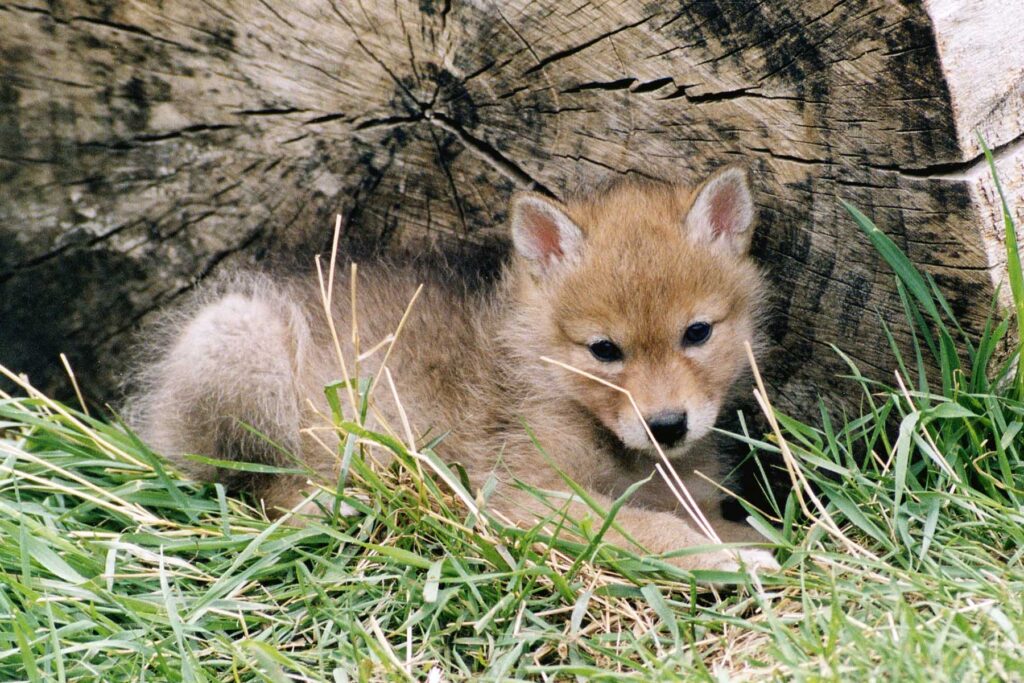
Footnotes
- “Hinterland Who’s Who.” May 29, 2013. https://hww.ca/assets/pdfs/factsheets/coyote-en.pdf
- Victor, Taiwo. “Coyote Teeth: Everything You Need to Know.” February 8, 2022 https://a-z-animals.com/blog/coyote-teeth-everything-you-need-to-know/
- Churcher, C.S. “Coyote.” March 22, 2015. https://thecanadianencyclopedia.ca/en/article/coyote
- Van Patter, Lauren E. “How Coyotes and Humans can Learn to Coexist in Cities.” November 5, 2020. https://theconversation.com/how-coyotes-and-humans-can-learn-to-coexist-in-cities-147738
- “Coexisting with Coyotes.” Accessed June 17, 2023. https://www.coyotewatchcanada.com/site/coexisting-with-coyotes
- “New Predator, New Territory.” Accessed June 18, 2023. https://www.gov.nl.ca/ffa/wildlife/all-species/coyotes/#Identifying%20Coyotes
- Graham, Nicole. “How to coexist with coyotes.” August 24, 2022. https://techlifetoday.nait.ca/articles/2021/how-to-coexist-with-coyotes

